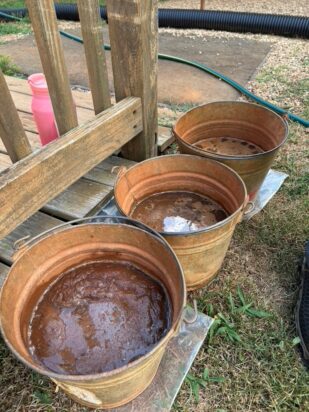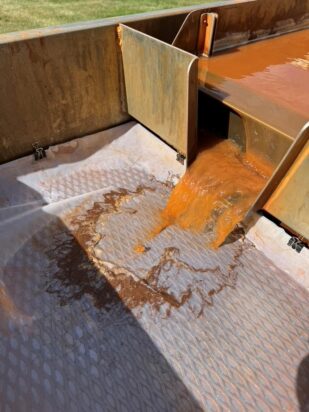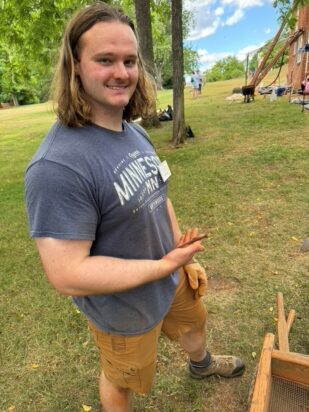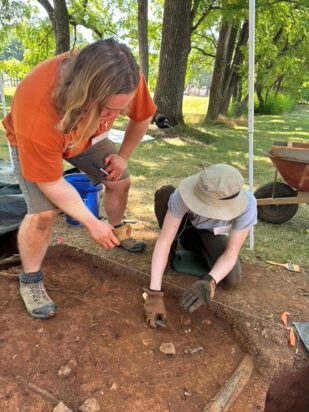Archaeology Blog
2024 Field School Week 4 (Part One)
By: Holly Bailey
This week, the field school students received some fascinating lectures by Dr. Eric Proebsting and Karen McIlvoy about landscape archaeology, zooarchaeology, and the history and process of restoring the Poplar Forest landscape to Thomas Jefferson’s original vision for his ideal retreat. The lectures covered aspects such as the influence of English gardens and Palladian architecture on Thomas Jefferson’s design ideas for Poplar Forest and how archaeologists combine information from excavated artifacts with written and oral sources to restore bygone landscapes accurately. Students also learned about zooarchaeology, the study of animal remains, which provides insight into food preparation and agriculture at Poplar Forest.
In addition to lectures, students continued excavating their 5 ft. x 5 ft. units at the 1857 Slave Dwelling, unearthing new and exciting artifacts, including buttons, bottle pieces, small animal bone fragments, ceramic shards, and a variety of small metal objects, such as nails and fittings. During this week’s lab time, students had the opportunity to learn about the process of flotation, which involves using water to separate materials of differing densities from sediments taken from an archaeological site. This makes it possible to recover plant remains and smaller artifacts that pass through typical archaeological screens.
Excitement is mounting as students eagerly apply the concepts, ideas, and techniques learned throughout the field school to the work conducted on the grounds of the 1857 Slave Dwelling. Despite the heat, the field school students remained undeterred and thrilled about the possibilities of discovering artifacts within their units. At the end of week four, the students were granted a slight reprieve from their fieldwork and set off on a journey to explore Colonial Williamsburg and Historic Jamestowne!



